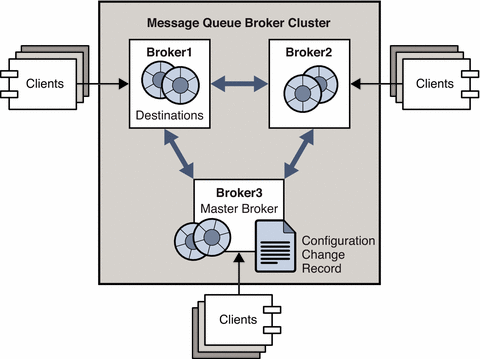Cluster Architecture
Figure 4–1 shows Message Queue’s architecture for broker clusters. Each broker within a cluster is directly connected to all the others. Each client (message producer or consumer) has a single home broker with which it communicates directly, sending and receiving messages as if that broker were the only one in the cluster. Behind the scenes, the home broker works in concert with the other brokers to provide delivery services for all connected clients.
In a cluster, service availability depends on brokers being able to share information about destinations and durable subscribers. If a clustered broker fails, it is possible that this state information gets out of sync. To guard against this possibility, you can designate one broker within the cluster as the master broker. The master broker maintains a configuration change record to track changes to the cluster’s persistent entities (destinations and durable subscriptions). This record is used to propagate such change information to brokers that were offline when the changes occurred.
Figure 4–1 Cluster Architecture

The following sections discuss how message delivery takes place within a cluster and how the brokers are configured and synchronized, even in the case when one or more has been offline.
- © 2010, Oracle Corporation and/or its affiliates
